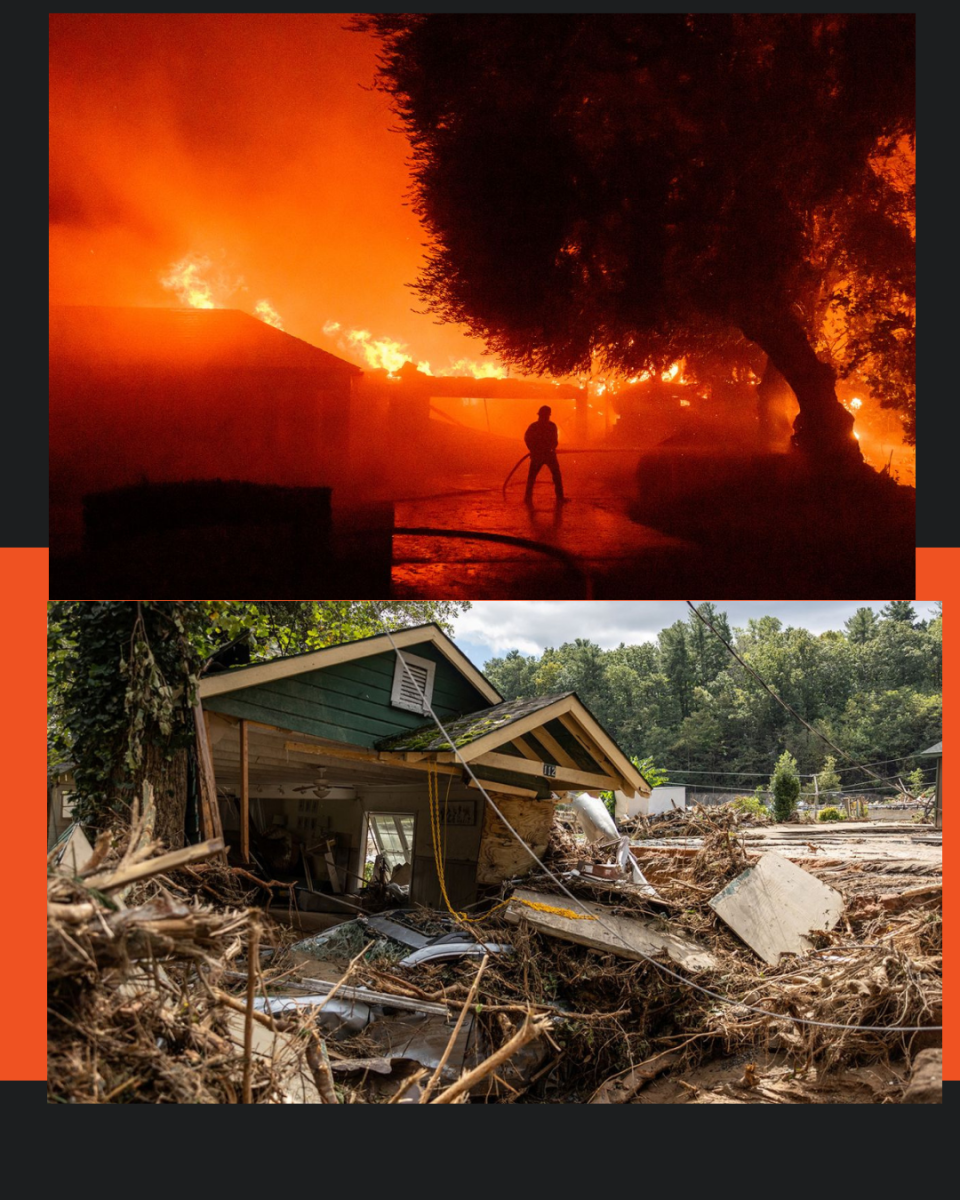In the past year, the United States faced over 27 natural disasters. From earthquakes and storms to fires and droughts, we lived through a period of constant devastation. These unforeseen events have caused the U.S. over one billion dollars per disaster in damages, totaling about 27 billion dollars throughout 2024. Aside from the economic and societal impacts, about 570 people died in natural disasters in 2024 alone, with that number reaching an immense 18,000 worldwide. Without the proper precautions and safety measures, this number is expected to continue to rise into 2025.
A major disaster occurred mere days into the new year. The Los Angeles wildfires set ablaze on Jan. 7, 2025, and lasted 24 days before finally slowing down and ultimately stopping on Jan. 31. In its destructive path, it wreaked havoc among many buildings, homes, and people. The California Department of Forestry and Fire Protection mentioned that these wildfires forced more than 200,000 individuals to evacuate, killed at least 29 people, and destroyed more than 18,000 homes in its trail, which burned over 57,000 acres of land.
The unfortunate cause of most of these fires, unbeknownst to many, is a combination of climate change, dry lands, and heavy weather. “It seems impossible to deny that climate change is increasing the scale and ferocity of the fires,” stated Kevin Rozario, Associate Professor of American Studies at Smith College. California is known for its extreme temperatures, and unlike humid Florida, with hot weather comes a dry atmosphere. Several non-profits, such as Greenpeace, the California Environmental Justice Alliance (CEJA), Earthjustice, have actively been working against continued climate change in California.
Not only is California facing struggles with climate change-based natural disasters, but North Carolina faced a devastating and destructive flood that lasted two days, starting on Sept. 25, 2024. Certainly, one of the main causes of this flooding was in fact Hurricane Helene, but climate change played its part in being a factor of its cause. According to the North Carolina Climate Science Report, “North Carolina has warmed by about one degree Fahrenheit over the past 120 years.” This means that heavy rains caused by hurricanes are becoming “more frequent and more intense.” Alongside these causes, major impacts, such as fatalities, major destruction, and destroyed land, came with its intensity. “The hardest hit area was eastern North Carolina, with 35 deaths, mainly related to inland freshwater flooding,” mentioned the National Weather Service. The rainfall from Hurricane Helene was about five months’ worth in just a few short days. “Over 7,000 homes were destroyed and approximately 17,000 homes deemed uninhabitable.”
The effects of these disasters still linger today. In April 2025, more flooding to western North Carolina resulted in damaging sewage lines, exposing the already vulnerable individuals to more chaos. In California, rebuilding efforts are still in process, affecting many lives.
Floods and fires continue to affect communities and people every year, harming thousands of individuals. Even though much devastation has occurred since these two disasters, it is important not to forget that many survivors still need help.
In the foreseeable future, we can only hope to work towards preventing climate change and taking more measures to prevent the loss of land, communities, and, most importantly, the loss of innocent lives. Climate change is no joke, and these disasters should be a national concern while many survivors still struggle to get back on their feet months later.














Arianna • Aug 14, 2025 at 11:26 am
Great story! Everyone should read it!
allysson • Aug 13, 2025 at 12:01 pm
This discussion describes how susbstantial natural disasters, like important fires and floods all over the U.S. , have become increasingly violent and costly, and how climate change has made them more hazardous, as well as, the discussion demands to assist survivors and to take more action to prevent future disasters.
Alex Contreras • Aug 13, 2025 at 11:57 am
Very informative, well written article highlighting the impact and effects of these natural disasters. Highly recommend reading.
lianna Sargsyan • May 21, 2025 at 4:14 pm
really great article! natural disasters can be really terrible.
mya • May 21, 2025 at 11:23 am
Great article! Natural disasters are devastating.
mark pinto • May 16, 2025 at 12:01 pm
this is terrible it’s shocking how much natural disasters happened just this year! hopefully we can calm mother nature down and take a break from these natural disasters
Maxim Makushkin • May 16, 2025 at 11:45 am
Interesting article. A lot of natural disasters appeared because of climate change.
ari • May 16, 2025 at 11:36 am
its insane how we have had so many natrul disaters
Brianna • May 16, 2025 at 11:33 am
Great article! its terrifying how dangerous they are, this article does a good job explaining it.
Audrey H • May 16, 2025 at 11:31 am
I’ve heard of so many of these. It’s crazy what’s happening.
delanie • May 16, 2025 at 11:30 am
people are denying climate change but we keep getting awful natural disasters more than ever. this is a serious issue and more people need to be aware.
Nathaly • May 16, 2025 at 11:27 am
Great article. This is very sad.
Vanessa ortiz • May 16, 2025 at 11:23 am
Cool Article! I didn’t know that much about natural disasters. I can’t believe the US has experienced so many.
chase • May 16, 2025 at 11:22 am
All of these natural disasters are crazy. I can’t believe how many we’ve experienced. This is a well written article.
Kyle • May 16, 2025 at 9:31 am
Awesome article. It was crazy watching these events take place in real time.
andrea • May 15, 2025 at 5:40 pm
I think it’s crazy that the United States alone has experienced 27 natural disasters
Leah • May 15, 2025 at 12:45 pm
Fires and floods keep getting worse and hurting more people. They are terrifying.
keyonna • May 14, 2025 at 1:27 pm
this article talks about nature disasters and It’s really bad about what goes on in the wild life.
Catherine • May 14, 2025 at 12:32 pm
Great article ! The United States has really been through a lot this year, especially California.
Brielle Crawley • May 14, 2025 at 12:26 pm
I actually used to live in the danger zone of the fires, and they were terrifying. This article describes it really well
Brianna Williams • May 14, 2025 at 12:22 pm
I think it’s crazy that the United States alone has experienced 27 natural disasters and that it cost around 27 billion dollars.
ngan • May 14, 2025 at 12:21 pm
The wildfire and flood caused a lot of damages to California. Hopefully there will be less disasters.
marissa • May 14, 2025 at 12:15 pm
this is really scary! climate change is not something to be taken lightly.